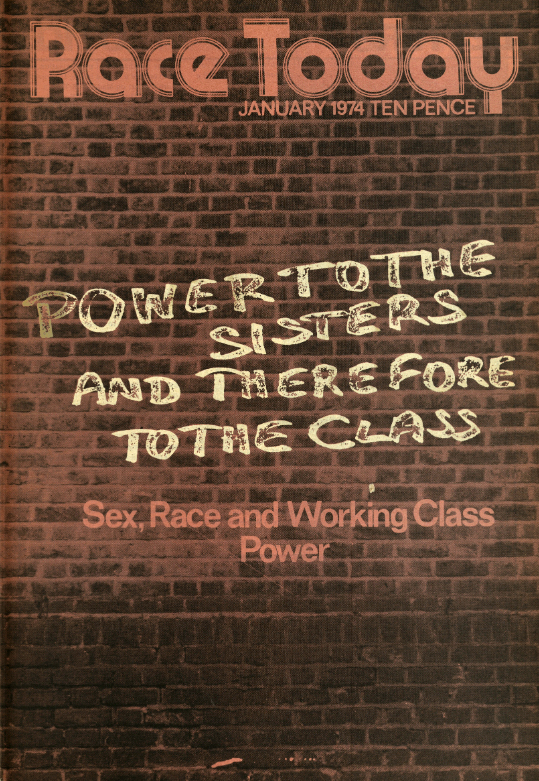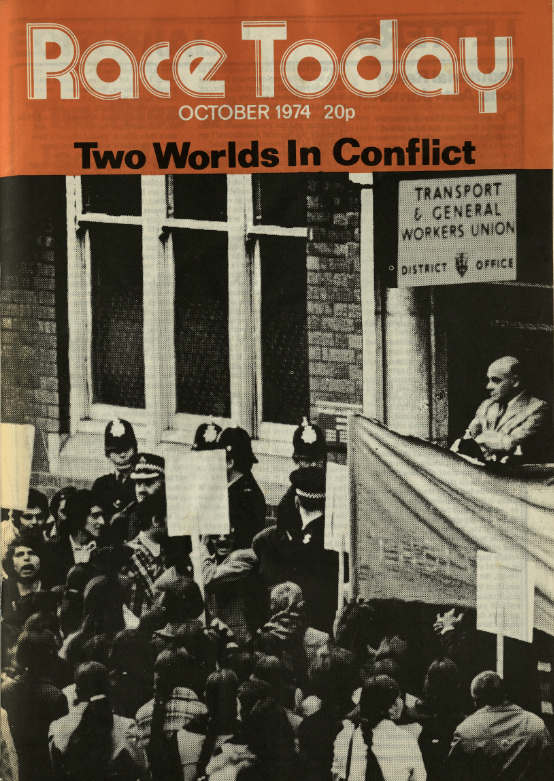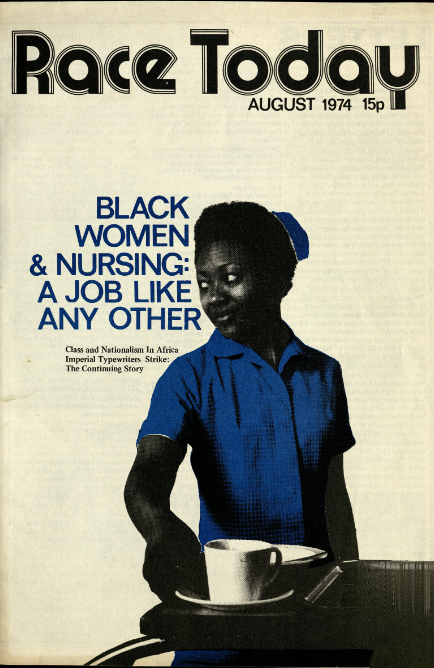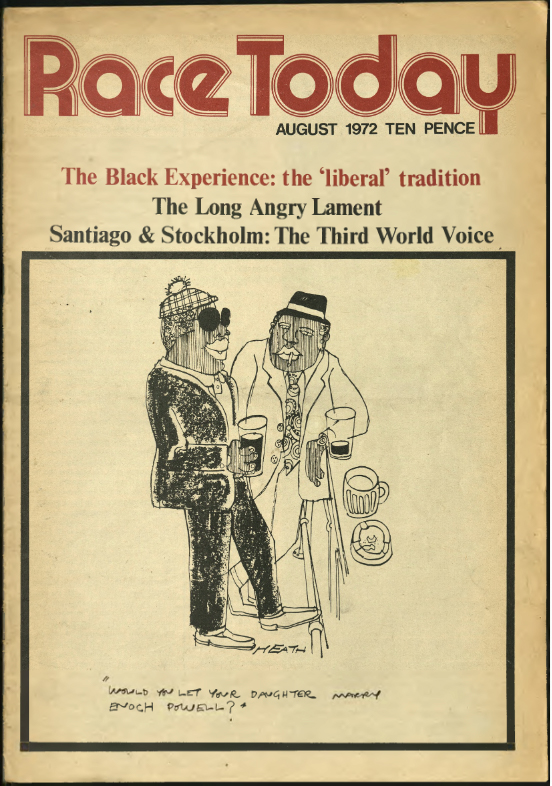
Race Today, January 1974
From 1974-1988, Race Today, a journal of the Race Today Collective, was an integral component of the struggle for racial justice in Britain. Race Today was pioneering in terms of its reports and analysis of struggles by Black and Asian workers in the UK against police and institutional racism. The Collective’s work was not just journalistic, as it was also a campaigning organisation, which supported grass-roots movements that aimed to advance the struggle for Black Power, the fight for Women’s Liberation and anti-colonial campaigns to free the countries which came to be known as the ‘Third World.’ Race Today centers race, class, and sex at the core of its analysis of events in Britain and across the world. The magazine’s global reach is represented by its writers. Contributors include CLR James who lived above the journal’s offices in Brixton; Darcus Howe and Leila Hassan, the magazine’s editors; and writers, activists, and intellectuals such as Mala Sen, Barbara Beese, Akua Rugg, Linton Kwesi Johnson, Selma James, Farrukh Dhondy, John La Rose, and Walter Rodney.
With ongoing struggle against police brutality, institutional racism and racial bias, the fight for racial justice has never been more urgent. It took a momentous turn with the Black Lives Matter Movement and now more than ever, is it important to bring to light the insightful publications, anti-racist campaigns and fearless journalism reflected in the Race Today Journals. Between 1973 to 1988, the Race Today journal and its writers ferociously fought for issues like police accountability, workers justice, trade unionism etc, challenged racist organisations and linked experiences of Black communities in Britain to struggles of other communities.

Race Today, October 1974
However, Race Today did not begin as a radical, anti-racist publication when it was founded in 1958 by the Institute of Race Relations. It was scholarly and conservative in nature. In 1972, the editorial committee and Race Today Staff protested the increasingly academic and politically neutral scope of the magazine. An internal coup, led by Ambalavaner Sivandandan, allowed the editorial community to take over control from the IRR management to adopt a more radical direction. Darcus Howe then embodied this new approach. An experienced journalist in campaigning media, he previously worked for Black Panther party’s Freedom News and was also the editor of briefly run Black Dimension Journal. It was Howe’s extensive media experience, immense political knowledge of Black liberation struggles and colonial legacies that made him an appropriate leader to execute this radical vision. He redirected and reconstructed the magazine’s original academic origins to fit the front lines of racial justice and politics.
Howe was deeply inspired by this political mentor and Race Today contributor CLR James, a Trinidadian historian and socialist, who advocated for unity between white working class and non-white communities. Howe became conscious of making the journal a platform for grassroots movements. As a result, in his first editorial, he set out to commit to centering the voices of Black and working-class communities instead of speaking for them himself. He further made it known that Race Today would open its pages to independent grass roots self-activity with a goal of furthering its development. As a final move after the split from IRR, Howe moved the journal’s offices from an institutional building in King’s Cross to a space in Brixton, at the heart of the Black community.

Race Today, August 1974
Race Today defined the power of community and togetherness after shifting away from the IRR. It was devoted to the community in many forms but especially culture. The Collective understood that culture and unity was a vital part of liberation movements. For this reason, the journal used its platform and voice to celebrate Black art, literature, music and sports during its tenure. It displayed works from major Black icons, such as Toni Morrison, Grace Nichols and James Baldwin on expression and Black identity. The Collective also organised cultural events such as book fairs and supported local musicians to perform at events like the Notting Hill Carnival while defending the Carnival’s cultural significance. For Black & Asian people, their community and unity became one of the only forms of support due to the racism and xenophobia they faced at places of work, schools, and neighbourhoods. Race Today captured this essence of community while fearlessly fighting against discrimination which is something we should mirror in current times.
The international coverage in the journal helped bring home the idea that liberation and equity are global needs. Issues covered situations beyond borders and showed the solidarity extended by the Collection to the exploitation and dehumanisation of communities and effects of colonialism. Thus, alongside accounts of Black people in Britain, there were extensive discussions of the struggles of workers and citizens in the Global South and showed support to Asian communities too.
Though Race Today was widely read influential in the 1970s and 80s, the magazine is now hard to access with only a few archives around the country containing the complete publication. Visit Special Collections and Archives to access 18 issues of the Race Today publications, located in the Vic Siedler Collection.

Race Today, August 1972
Adya Jalan, Decolonising Projects 2021
Bibliography
Field, Paul, Bunce, Robin, Hassan, Leila, & Peacock, Margaret. (2019). Here to Stay, Here to Fight. London: Pluto Press.
The Race Today Collective: Why Press and Media are Vital in the Fight for Racial Equity
Black Britannia: The Race Today Collective Demonstrated the Radical Potential of Journalism
Leave a Reply